

Setbacks - Dealing with Pain Flare and Bad Days
The information in this section fits most situations, but what you are
going through may be different. If the doctor or nurse tells you to do
something else, please follow what they say.
If you think there may be a medical emergency go to your nearest
hospital Emergency Room.
Click on the telephone icon at the bottom left of the website to access
other helpful phone numbers.
Everyone has bad days; however, when you are dealing with chronic pain, it can be more difficult to deal with other challenges in life. As well, many people who have chronic pain everyday have pain flares that can be excruciating.
This chapter discusses how we can prepare for and deal more effectively with bad days and pain flares.
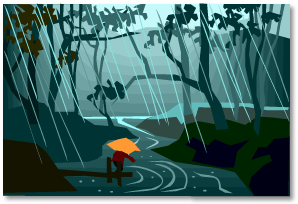
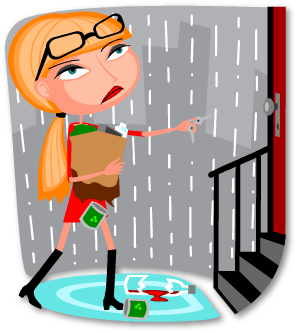
Be able to deal with setbacks
The exercises, listen to the CD, and watch the videos for this chapter




Read
Learn
Do
Goal
Goals
The information in this chapter applies to all of the other chapters. You can have setbacks at any stage of a plan. These can make it difficult to reach your goals. In this chapter we will use some of the skills that you have learned in the Challenges section to help you decide what you do when you have a setback.
About common setbacks
How to make a plan to deal with setbacks
PACE - Picking a Problem
-
Introduction
It is time to do some detective work and pick a problem that you would like to work on. This is the first step of PACE!
The information in this section fits most situations, but what you are going through may be different. If the doctor or nurse tells you to do something else, please follow what they say. If you think there may be a medical emergency, please click on the help phone icon on the bottom left corner of the site.





Once in a while I go for a jog with my friends and I often get very tired and that leads to more pain. How can I stay in shape without having to pay for it with pain and fatigue?
I’ve made a plan that would help me out when I am facing difficulties but when the right time comes, I end up not following through.
My plan is to work on improving my sleep, exercising more and doing relaxation exercises. But when my pain gets bad, I don’t do any of it. I don’t think my plan is realistic!
Some days I feel like I have made so much progress in learning how to cope with my pain, but then, out of nowhere, I have a flare up and I am back to the start again.

I am not motivated to follow through with my setback plan.

I try to cope with my pain but there is always something that gets in the way of my plan

-
Common setbacks
Common setbacks include:
• Flares
• Forget to take your medication
• Took on too much
• Forgot to pace yourself in an activity
• Too tired to use the tools and plans you have learned
Sometimes situations that set you back could have been avoided. Other
times nothing you did or didn’t do could have caused it. Everyone will
experience some setbacks throughout their lives. There will always be ups
and downs.Setbacks can be very challenging to deal with. You may feel discouraged
that you aren’t making any progress. It is important to not forget about all of
your growth and progress you have already made even if the setbacks set
you back a couple of steps.Setbacks can be very challenging to deal with. You may feel discouraged
that you aren’t making any progress you have already made even if the
setbacks put you back a couple of steps.Click on the video to learn more about common setbacks.
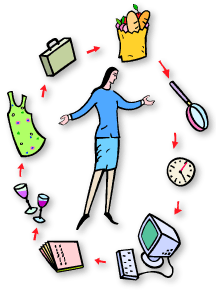


-
Pain flares
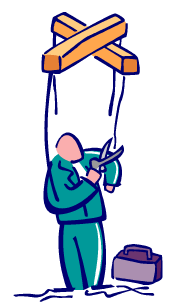
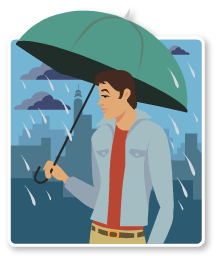

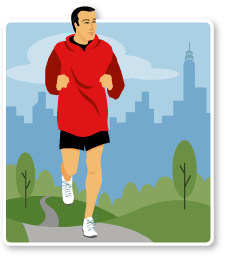
A pain flare is when you usual pain gets worse for a few hours or even a few days. Most people with chronic pain have flares. This is sometimes also called breakthrough pain (BTP).
What causes a pain flare?
• Weather
• Too much physical activity
• Stress
• An injury
• Lack of sleep
• Sometimes it happens for no apparent reason
How to manage pain flares
• Remember that flares are temporary
• You are not helpless in dealing with flares
• Use relaxation exercises like deep breathing or muscle
relaxation or any other techniques you may have listed in
your setback plan• Replace your anxious thoughts with calm ones
• Find out if something triggered the flare. Certain foods can
cause headache flares and bad posture and certain activities
can cause back pain flares• Think about if you activity level has changed lately. It is
important to pace yourself and have plenty of rest periods
between activities. Too much activity could bring on a flare but
so can too little. Some exercises can help you reduce flares.
Find out which ones work for you• Use distraction strategies like watching a movie, listening to music or reading a book
• Do not decrease or increase your medication during a flare unless your doctor has told you to do so.
Remember that there are things you can do when you have setbacks
What you do during a setback will make a difference to
• How OFTEN you have a setback
• How LONG the setback lasts
• How SEVERE the setback is at the time
It is important to take control of the situation rather than allowing
pain to control you! -
Myths and facts
There are some common thoughts on setbacks and flare ups and it is not easy to know which ones are true and which ones are false. You may have heard certain things about flare ups or you may have had your own experiences. Relying on false information can be serious and may lead to dangerous situations.
Please click on the icon below to view a list of common thoughts on pain flare ups, and then look in the box next to it to see whether that statement is true or false. You might be surprised about certain answers.

-
Statistics
Take a look at the following statistic findings on communication. You might be surprised!
Did you know?
In a pain survey 60% of respondents said that pain is just something that they need to live with
In a pain survey 28% of respondents said that they felt there was no solution for their pain
67.9% of chronic pain participants said that changes in the weather affect their pain
-
Example
Jenna picks a problem to work on
I’ve been living with chronic pain for about a year now. Often times, just
as I feel like I finally have my pain under control, I experiences a pain
flare and it sets me right back to square one all over again.

-
Worksheet
PACE - Acting Upon the Problem
-
Introduction
Now that you have clarified what concerns you most, it’s time to decide what to do. Ready... set... action! In this section, the 2nd of PACE, we will look at how to deal with and plan for setbacks.

-
How to deal with flares and bad days
Strategies to add to your plan
• Get in early, the sooner you recognize setbacks the easier it will be to deal with them
• Accept that setbacks are part of your normal experience and not a catastrophe
• Try to figure out the reason for your setback
• Reassess what you are doing. You may need to reduce the demands on yourself for a while and reduce activities and exercise
• Never completely stop doing things
• Always pace your activities and gradually build up again
• Start by setting simple goals for yourself until you are back on track
More Strategies to add to your plan:
• Remember your coping strategies.
• Are you slipping into negative thinking?
• Are you getting tense or upset?
• Try to relax.
• Remember that tension makes the pain worse.
• Be flexible and realistic. You have survived setbacks in the past.
• Talk to others; communication is important.
• When the setback is over and once the bad phase has passed, it can help you learn ways of coping the next time you have a setback.
• Setbacks can sometimes be positive.
-
Making individualized setback plans
Before making an individualized setback plan, please consider:
• Reviewing and evaluating your activity and goals.
• Building in regular relaxation.
• Adding activities combined with short rest periods.
• Asking yourself what you want to do about assigning jobs to others.
• Thinking about what you want to do about telling other people.
• Writing yourself a reminder to focus on your thoughts and to challenge negative thoughts.
• Re-reading Pain 101 chapters and your notes.
• Being kind to yourself during the setback.
• Writing yourself a note to re-write your setback plan once you get through it, so that you can learn from the experience
-
Your setback plan
Please click on the icon below to access a worksheet that can help you come up with a setback plan. Take note of the things that set you back, then what you plan on doing about when a setback occurs. You are encouraged to write down if you were able to achieve your plan, what you can do to prevent a setback or what you could do differently in the future. There is an example on the worksheet that can help guide you when you are reflecting on your own setback plan.

-
Example
Jenna takes action
I’ve made a setback plan with a list of things I can do when I have flare
ups. I think that a lot of the time, I try to do too much all at once. Instead
of doing a full hour of exercise all at once, I plan on breaking it up into
four sessions of fifteen minutes throughout the day. If I have a flare up
during that time, I will take a short rest

-
Worksheets
PACE - Challenges You May Face
-
Introduction
Even with the greatest plans we can sometimes come across obstacles. Before moving on with a plan, it is important to look at some of the challenges you may be facing. This brings us to the 3rd section of PACE.
The next pages describe some common doubts that
other people with chronic pain have shared with us in
regards to setbacks.Hopefully you have written your setback plan so that you are prepared to
deal with whatever challenges that get in your way, and that it is kept in a
place where you can easily find it when you need to use it.The next few pages describe some common doubts that other individuals
with chronic pain have shared with us...

-
I don't always remember to take notes on my setback plan sheet
It’s important to consistently take notes in your setback plan. It helps to
keep the setback plan sheet in a place where you will see it and have
easy access to it. Some people put in on their kitchen table, where they
know they will have coffee in the morning and that is when they will
write on it; others keep it in their agenda, where they will see often and
that will remind them to write notes on it.
-
I don't always follow through with my setback plan
Your setback plan works best when it’s followed consistently. Your
setback plan is a handy tool that helps you figure out what to do when
things don’t always go the way you had planned them to. You will get
better results if you use your plan regularly!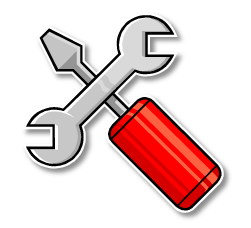
-
Example
Challenges Jenna faces with her plan
The problem I’ve been facing in my setback plan is that I don’t always
remember to take notes on my setback plan sheetJenna gets more help
I don’t think there is any need for me to consult anybody about the
challenge I am facing with my setback plan. I just need to get more
organized and consistent with writing in my setback plan sheet. But, I
did mention this to my coach who then gave me tips on ways to
remember to keep writing on my setback plan sheet. My coach also reminded me how important it is to be consistent with my plans as this will help me carry out my plan and also help me notice what works well and what sets me back.



-
Worksheets
PACE - Evaluating Your Plan
-
How did your plan work?

This brings us to a final step of PACE, evaluating your plan.
Just like using a scale, weight out how successful the plan was in dealing with the problem you chose to work on.
Now that you have done most of the reading on how to deal with bad
days, setbacks and pain flares, look back at your plan and evaluate if it
worked. Do you see some improvement? It’s important to look at the
things that did work and to remember not to try to fix everything all at
once. Some things may take a little longer to work on than others.Click on the video to learn more about evaluating your plan.


-
How will you know if you need to modify your plan?
Try for a week or two and track how well your plan is working. At the end of every day, write down what is working and what isn’t.
Reward yourself for progress as often as you can. Remember that changing behaviours, especially when you are in pain and feeling tired and stressed can be hard. If you persist, you will see rewards!

-
Different ways of keeping up with your plan in your everyday life
Good job for getting this far! Now that you have done all of the
steps necessary to work on the problem you picked to work on, it
is important to find ways of applying them in your everyday life.Asking your support network, like your friends and family, to help
motivate you with your plan is also a great idea.

-
Example
Jenna evaluates her plan
My setback plan is working better now that I am more consistently writing
on my setback plan sheet. I am noticing that what sets me back most is
not so much the pain itself, but a lot of it is due to my fear of feeling more
pain while doing an activity. Keeping a setback plan sheet really helped
me clarify what actually sets me back, which in turn will help me work on
improving my quality of life.

-
Worksheet
-
Example 2
How Jenna will stay on track
I think that a way to keep doing what I used to do before my chronic
condition without taxing my body with more pain is to pace my activities.
Instead of trying to do everything all at once, I divide the task, take breaks
and recognize what sets me back. I think that the best way to be
successful with this is to be consistent with my plan.

-
Worksheet
Checklist
Clicking on the icon below will link you to a CHECKLIST of situations you may be going through; it also allows you to express some of your difficulties or concerns.
Click on the icon to access the checklist

Resources
Click on the icon below to access a page that has links to other resources about setbacks that you might find helpful.
If you are interested in learning more about this subject, please consult the following references. If you need help finding any of these resources you can ask any member of your psychosocial team.
Chronic Pain
Conclusion
Congratulations! You are done this chapter. By finishing this chapter and completing all the worksheets you have learned many skills. We hope that you have solved your problem using PACE and learned many new ways to tackle new problems. You have put in a lot of work in this chapter so give yourself a pat on the back.
In this chapter you have read about:
• A variety of examples of common setbacks.
• How to create a setback plan.
• The importance of having a plan in place in case of a setback.
• Pain flares; what they are, how to prevent them and what to do if or
when they happen.
Clicking the Next button will lead you to the table of contents for the chapter about Life with Pain, or you can choose a different chapter from the menu on the left.

Introduction
Goals
P - Picking a Problem
A - Acting Upon the Problem
C - Challenges You May Face
E - Evaluating Your Plan
Checklist
Resources
Conclusion
Glossary





